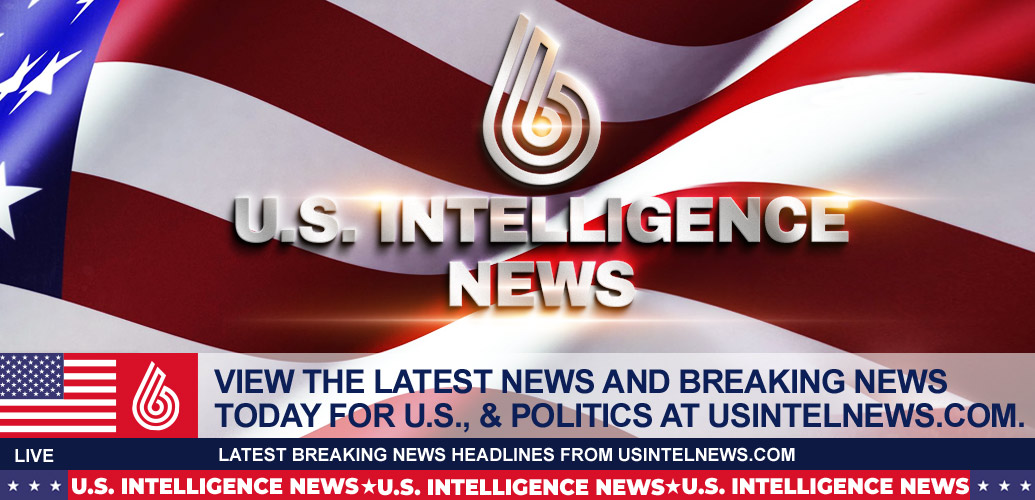
The U.S. Intelligence Community
On Friday,
a gunman stormed a pair of mosques in Christchurch, New Zealand, showering
worshippers with gunfire, and livestreaming the country’s deadliest mass killing since 1943. “I was
able to hear the big sound of the shooting,” one survivor, Mohan Ibrahim, told
the Canadian broadcaster CBC. Ibrahim fled through back entrance, people
dropping around him. “Many, many bullets, I’ve never seen anything like that.
Later on, we saw the video … he was reloading so many guns.”
Brenton
Tarrant, a twenty-eight-year-old Australian national, reportedly claimed
responsibility the slaughter. Police arrested the suspect and three others
believed to be linked to the massacre, which by its conclusion had claimed 49 victims.
Soon after
emerged an apparent manifesto: seventy-three pages of the same anti-immigrant
conspiracy theories and white nationalist talking points that have prompted far-right
murderers to spill blood from Charlottesville to Christchurch, from Pittsburgh to Athens. The attack has underlined the internationalism of the
ultra-nationalists, the global danger posed by white nationalists and
neo-fascists who now feed one another’s violence, tactics, and ideologies.
The global
rise of neo-fascist and white nationalist presents an “enormous threat to the
well-being of multicultural society,” Alexander Reid Ross, author of Against the Fascist Creep, told me. “This
is just the latest incident in what seems like an increasing tendency of white
nationalists to attack civilians in synagogues, mosques, and churches, while
attempting to build off one another.”
Tarrant’s
manifesto heaped praise on Anders Breivik, the Norwegian
mass murderer who slaughtered 77 people in 2011, and American white nationalist
Dylann Roof, who gunned down churchgoers in Charleston, South Carolina nearly
four years ago. The rambling document included admiration for U.S. President
Donald Trump, whom Tarrant celebrated as “a symbol of renewed white identity
and common purpose.” and declared that “our lands will never be their lands as
long as the white man still lives.”
In
Australia, whence the suspect hails, the rise in unabashed Islamophobia has
buoyed far-right and ultra-nationalist movements in recent years. The country’s
broad far-right category includes “several very different groups positioned on
an ideological spectrum of extremism from conservative anti-immigration,
anti-Islam groups to far-right neo-Nazi, anti-Semitic, generally racist, white
supremacy groups,” a group of Griffith University criminologists wrote in 2016.
Many of
these groups nurture relationships with international counterparts, stretching
from Greece’s Golden Dawn, a violent neo-Nazi outfit currently
on trial for operating a criminal organization, to anti-Muslim hucksters in the United Kingdom and the U.S.
In 2018, U.K. Islamophobe Tommy Robinson and former Proud Boys leader Gavin
McInnes, known for urging his followers to attack anti-fascists in the streets,
managed to sell tickets for up to around
$750 a head for a planned five-event December speaking tour of Australia. (It
was postponed when Robinson planned a conflicting Brexit protest.) “The
Australian far right draws inspiration from overseas groups in the U.S. and U.K.
trying to form local chapters,” sociologist Joshua Roose told Australian broadcaster SBS in
November. “However,
other groups formed organically in Australia. And they mostly formed in past
three years.”
These
international links were on full display in the violence in Christchurch. Southern
Poverty Law Center (SPLC) president Richard Cohen observed as much in a
statement Friday, warning that the manifesto “bears the unmistakable
fingerprints of the so-called alt-right, both in tone and reference.” On
Twitter, SPLC journalist Michael Edison Hayden pointed
out that the same
meme posted on the cover of the manifesto had been promoted by former Ku Klux Klan
leader David Duke last month.
The
symbols and slogans emblazoned on the killer’s weapon also pointed to the
global nature of neo-fascism and white nationalism. Written in white on the
suspect’s guns were the Greek word for “Turk eater” and the number fourteen, an
apparent reference to the “Fourteen Words,” a white nationalist mantra coined
by David Lane.
President Trump
condemned the Christchurch attacks, but his administration has spent the last
three years emboldening white nationalists and neo-Nazis, cracking down on
left-wing activists, and mainstreaming anti-immigration conspiracy theories
tinged with anti-Semitic undertones not dissimilar to those promulgated by
Tarrant. In October, the president addressed an audience of supporters at a
campaign rally in Houston, Texas. He prompted “USA!” chants from the crowd when
he declared himself a “nationalist” fighting against “power-hungry
globalists.”
During the
2018 midterm elections, Trump maligned a U.S.-bound caravan of refugees and migrants
as an “invasion,” a conspiracy theory repeated by white nationalist Robert
Bowers when he gunned down worshippers at a Pittsburg synagogue last November. The
Christchurch shooter used eerily similar language in a blog post on Thursday:
“I will carry out an attack against the invaders,” he wrote, apparently referring to Muslim immigrants.
The
similarities are not going unnoticed. “In this case, a killer attacked Muslims
worshiping at two mosques. In November, a killer massacred Jews at a synagogue
in Pittsburgh,” Cohen said Friday. “Though the victims were different, and the
attacks came in different parts of the world, the terrorists shared the same
ideology of white supremacist hate.”
Perhaps
even more disturbingly, however, far-right politicians from Australia to Europe
responding to the attacks have doubled down on white nationalist rhetoric, shifting
the blame from the killer to the Muslims targeted by the violence. Australia
Senator Fraser Anning, who represents Queensland, condemned the attacks but
used the opportunity to spread Islamophobic bile. “The real cause of bloodshed
on the New Zealand streets today is the immigration program which allowed
Muslim fanatics to migrate to New Zealand in the first place,” Anning wrote.
Halfway
across the world, Hungary’s far-right Prime Minister, Viktor Orban, on Friday celebrated Hungarians for supposedly stopping
“at our southern borders, the migrant invasion directed at Europe.” Orban has spent
the last several years blaming Jewish Hungarian-American billionaire
philanthropist George Soros for Europe’s refugee crisis. “Without the
protection of our Christian culture we will lose Europe, and Europe will no
longer belong to the Europeans,” he added—an uncomfortably close echo of
Tarrant’s death-struggle us-versus-them manifesto language.
In the U.S. as well, President Trump called the attacks a “horrible, horrible thing” before quickly pivoting to the topic of immigration. “People hate the word invasion, but that’s what it is,” he said.
In the
wake of yet another deadly attack amidst a global rise in far-right violence, many in the
coming days will understandably be wondering what an appropriate response
should look like. “It’s incumbent on leftists to work toward a clear
internationalist platform that rebukes nationalism, rebukes hard borders, and
rejects the notion that Europe is a white continent,” Ross told me. The
increasingly international nature of rightist extremism requires an equally
international anti-fascist response that addresses its root causes. Until that
response comes, and so long as the people occupying the corridors of power from
North America to Europe and beyond spread the same messages once thought to be
confined to the dark crevices of the internet, we can expect more bloodshed
targeting immigrants, worshippers, and everyone opposed to hate.
This article has been updated to include President Trump’s remarks in response to the attack.

 Ethicoin: Securing the Post-COVID-19 Future
Ethicoin: Securing the Post-COVID-19 Future  A Proclamation on National Crime Victims’ Rights, 2024
A Proclamation on National Crime Victims’ Rights, 2024 